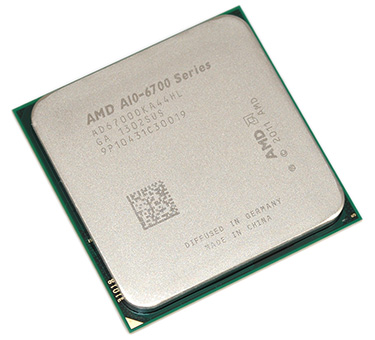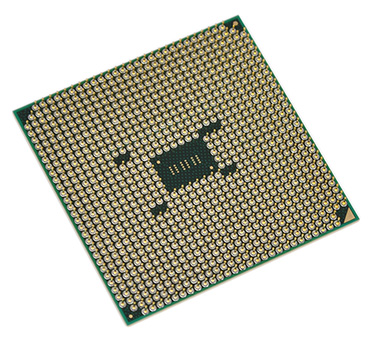The Pick Of The Bunch?
Quite a few members of the HEXUS team are intrigued by the prospect of an AMD APU that's competitive on all fronts; CPU performance; IGP performance; energy efficiency, and price.
Such a chip would be ideal for a capable, low-cost build, but we aren't quite there yet and we suspect we'll have to wait for next-generation 'Kaveri' - complete with Steamroller cores, a GCN IGP and hUMA - before we see an APU that ticks all the boxes.
Until then, we're having to make do with a refreshed 'Richland' platform that is, for all intents and purposes, last year's 'Trinity' with icing on top. Our evaluation of the top-of-the-range A10-6800K surmised that AMD's well-balanced architecture would ordinarily make it a solid fit for a small-form-factor system, but we held reservations against the chip's lofty 100W TDP.
What AMD really needs, we concluded, is a chip that's practically as fast as the A10-6800K yet suckles on far less power. Enter the A10-6700.
| APU Model | CPU Cores |
CPU Base Clock (GHz) |
CPU Turbo Clock (GHz) |
GPU Brand |
GPU Cores |
GPU Base Clock (MHz) |
L2 Cache |
Max. DDR3 (MHz) |
TDP |
Price (US 1ku) |
|---|---|---|---|---|---|---|---|---|---|---|
| A10-6800K | 4 |
4.1 |
4.4 |
HD 8670D |
384 |
844 |
4MB |
2,133 |
100W |
$142 |
| A10-5800K | 4 |
3.8 |
4.2 |
HD 7660D |
384 |
800 |
4MB |
1,866 |
100W |
$122 |
| A10-6700 | 4 |
3.7 |
4.3 |
HD 8670D |
384 |
844 |
4MB |
1,866 |
65W |
$142 |
| A10-5700 | 4 |
3.4 |
4.0 |
HD 7660D |
384 |
760 |
4MB |
1,866 |
65W |
$122 |
Slotting in to AMD's Richland range as a low-power alternative, the A10-6700 follows in the footsteps of the previous-generation A10-5700 by offering balanced performance in an attractive 65W power envelope.
Cutting the TDP by one-third is a handy trick and, as expected, AMD achieves the extra efficiency primarily through the use of lower core clock speeds. Worth noting, however, that the performance gap has been narrowed this time around; in Turbo mode, the quad-core A10-6700 will run just 200MHz slower than the 100W A10-6800K.
Notice how both 6000-series chips carry the same price? It's an interesting stance for AMD to take - users typically want to pay less for a slower chip - but understand that both parts are aimed at different audiences. The multiplier-unlocked K-series chip is designed for overclockers who aim to squeeze out every last drop of performance, whereas the A10-6700 targets mainstream users seeking strong multimedia capability in a power-efficient chip that enables quiet small-form-factor systems.
The A10-6700 is, in our estimation, the stand-out part when perusing the Richland range, but there is a proviso to be wary of. One of the strengths of the APU is that the integrated graphics processor (in this case HD 8670D) can be paired with a discrete Radeon HD card in dual-graphics mode. However, while AMD's confusing 8000-series branding suggests that the IGP should be partnered with a next-generation 'Sea Islands' card, that isn't the case: the Richland IGP continues to be based around ageing HD 6000-series tech and needs to be paired accordingly.
Next-generation Kaveri APUs will be equipped with GCN-based IGPs, allowing for CrossFire with modern discrete cards, but consumers picking up an A10-6700 will need to source a Radeon HD 6000-series card to make use of the Dual Graphics tech. For those considering such a configuration, AMD's recommended card for pairing is the Radeon HD 6670.
The Richland APU ultimately offers little in terms of new tech, but it has the benefit of retaining the tried-and-trusted FM2 socket. Let's now find out if the A10-6700 really is the pick of the bunch.











